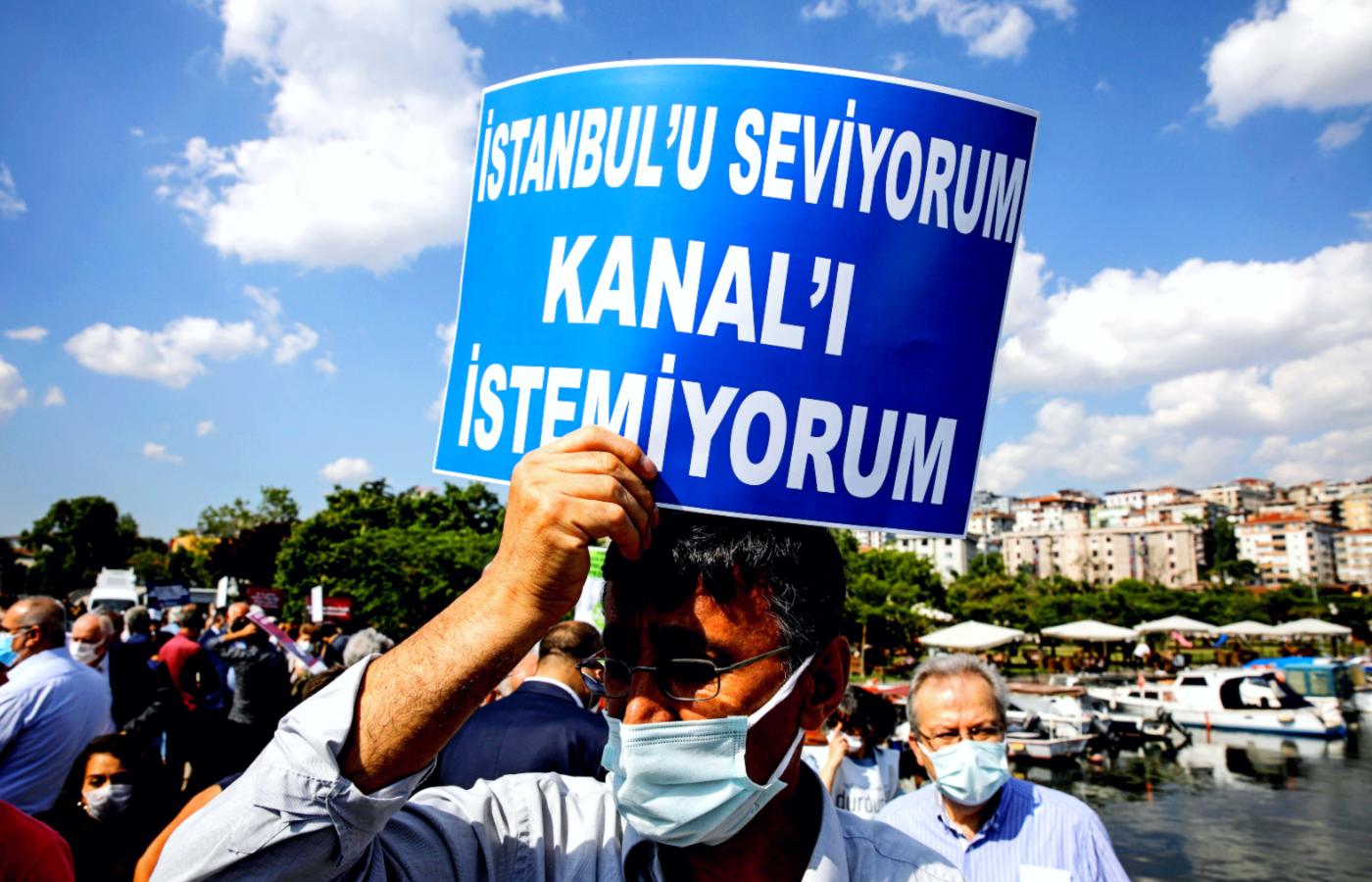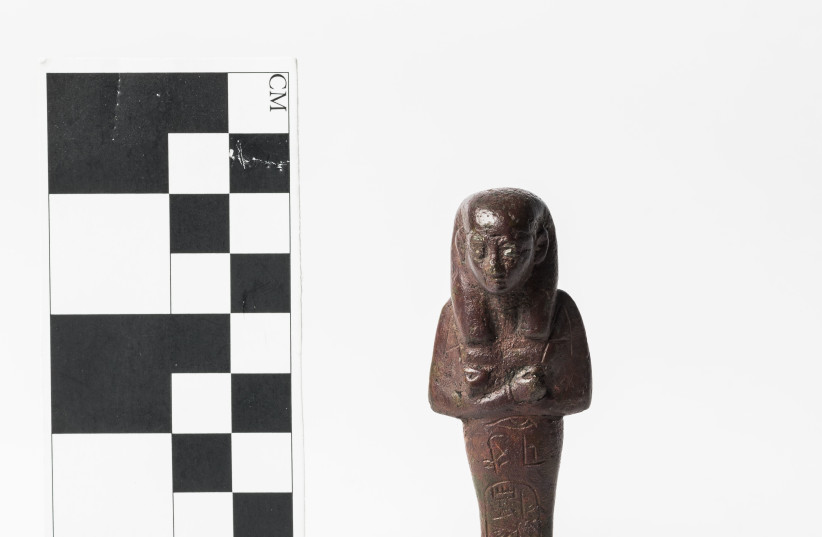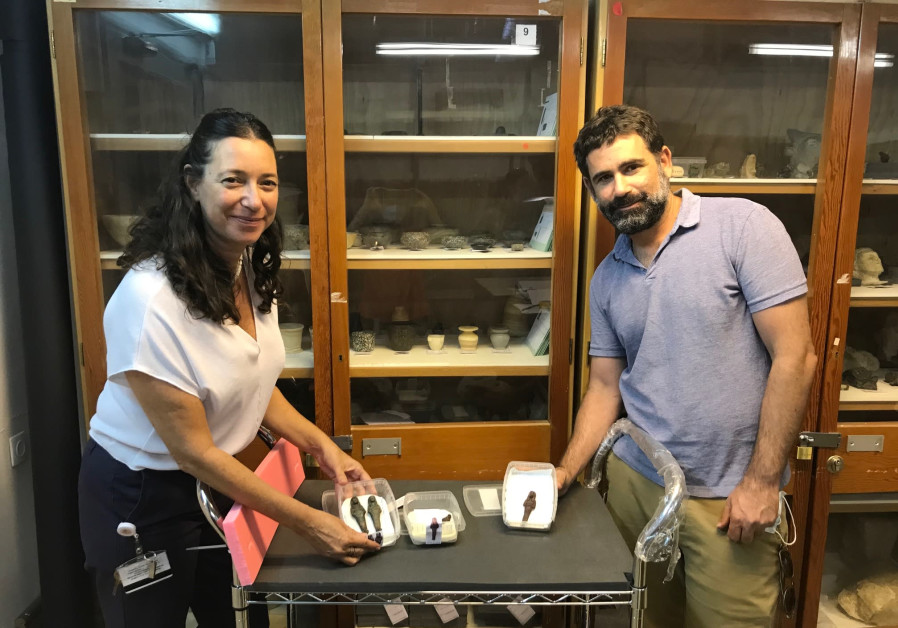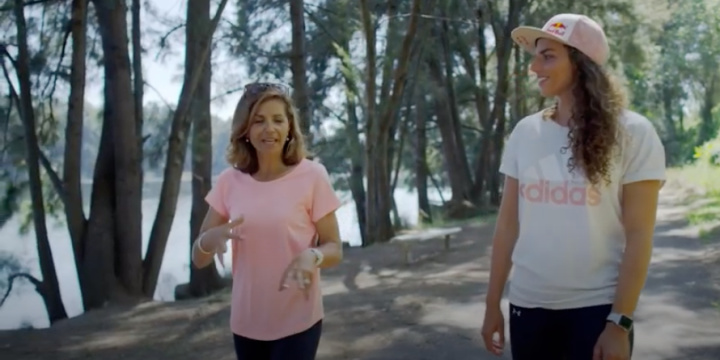
 Kanał Stambulski podzieli los CPK? Szalona idea Erdoğana
Kanał Stambulski podzieli los CPK? Szalona idea Erdoğana
Dominik Sipiński
Turcja udaje, że rozpoczęła roboty przy budowie Kanału Stambulskiego, omijającego Cieśninę Bosforską. To projekt drogi, szkodliwy i potrzebny jedynie prezydentowi Recepowi Erdoğanowi.
.
Polski rząd otwarcie przyznaje, że jedną z inspiracji do budowy Centralnego Portu Komunikacyjnego było wielkie lotnisko otwarte w 2019 r. w Stambule. Podobieństw między godnościowymi inwestycjami władz w Warszawie i Ankarze jest jednak więcej. 26 czerwca prezydent Recep Tayyip Erdoğan formalnie zainicjował budowę Kanału Stambulskiego, który ma omijać Bosfor i udrożnić tranzyt między morzami Śródziemnym i Czarnym. Choć pod względem skali nie da się porównywać tego gigantycznego projektu do przekopu Mierzei Wiślanej, to z polską inwestycją łączy go brak sensu ekonomicznego, potencjalnie dramatyczne skutki środowiskowe i pretekst geostrategiczny, który tylko stwarza pozory zasadnego.
Kanał Stambulski. „Szalona idea” Erdoğana
Turecka inwestycja nie jest pomysłem Erdoğana, bo o budowie przekopu równoległego do Bosforu myśleli już otomańscy sułtani w XVI w. Ale to rządzący w rolach premiera i prezydenta od 2003 r. autokrata rozpoczął realizację tego planu. To kolejny z jego wielkich infrastrukturalnych pomysłów zmieniających oblicze największego miasta kraju – po trzecim moście przez Bosfor (2016), tunelach drogowym i kolejowym pod cieśniną (2016 i 2019) oraz megalotnisku.
Wszystkie były koszmarnie drogie, a przy ich realizacji nieszczególnie przejmowano się kwestiami środowiskowymi czy prawami mieszkańców. Ale mają uzasadnienie ekonomiczne. Natomiast kanał może być nie tylko najdroższą inwestycją, ale też najmniej potrzebną – nie chcą go nawet armatorzy statków, którzy mogliby skorzystać. Nie bez powodu, sam Erdoğan mówi o nim, że to idea „szalona”.
Dla Turcji Kanał Stambulski to projekt na miarę przekopów w Suezie i Panamie. Droga wodna ma mieć 45 km, znacznie mniej niż Kanał Panamski (80 km), nie mówiąc o Sueskim (193 km). Kanał Stambulski będzie głębszy (co najmniej 20,75 m) i szerszy (275 m) niż egipski i panamski odpowiednik, a sześć nowych mostów nad nim zostanie zaprojektowanych tak, aby umożliwić tranzyt statków o wysokości 58 m. Nowy kanał od strony Morza Czarnego rozpocznie się w pobliżu megalotniska. Ma dzięki temu powstać zintegrowany system logistyczny, łączący także transport drogowy i kolejowy. Położenie Stambułu między Europą i Azją jest punktem wyjścia dla geostrategicznej wizji Erdoğana, a zwiększenie roli tego miasta jako hubu przeładunkowego ma być odskocznią dla znajdującej się w coraz większym kryzysie gospodarki.
Turecki kanał. Więcej problemów niż pożytku
W teorii najważniejszym argumentem za budową kanału jest zatłoczenie Bosforu. Ruch w cieśninie wzrósł od 2005 r. o 72 proc., a zwolennicy pomysłu Erdoğana zwracają uwagę na długi czas oczekiwania statków na tranzyt, zagrożenie dla bezpieczeństwa, zanieczyszczenie związane z tłokiem i ryzyko katastrofy ekologicznej w centrum Stambułu.
Te argumenty nie wytrzymują zderzenia z faktami. Jak wynika z raportu przygotowanego przez sam rząd turecki, średni czas oczekiwania statków na tranzyt przez Bosfor to 13,7 godziny, mniej więcej tyle samo co w Kanale Sueskim. W Panamie statki czekają nawet kilka dni. Co więcej, kolejki w Bosforze wynikają nie z braku przepustowości, ale z warunków pogodowych (częstych mgieł i silnych wiatrów), braku wystarczającej liczby statków pomocniczych i urządzeń nawigacyjnych. Kanał będzie tak samo, a może nawet bardziej narażony na mgły, a drugą z przyczyn Turcja może usunąć znacznie niższym kosztem, bez budowy nowej drogi wodnej.
Pod względem środowiskowym nowy kanał przysporzy za to więcej problemów, niż ich rozwiąże. Budowa zniszczy cenne lasy, które odgrywają kluczową rolę w obiegu wody pitnej dla Stambułu. Z europejskiej części miasta, którędy nitka ma przebiegać, pochodzi 40 proc. zapasów wody dla tego gigantycznego miasta. Poza zaburzeniem obiegu wody dochodzi ryzyko skażenia wód podziemnych. Połączenie ekosystemów Morza Czarnego i Marmara może zaszkodzić im obydwu. Mimo teoretycznego zagrożenia katastrofą w Bosforze od 40 lat w cieśninie nie doszło do żadnego istotnego zdarzenia związanego z bezpieczeństwem.
Ominąć Bosfor i konwencję z Montreux
Dla Turcji ma to być inwestycja finansowa i polityczna. Zgodnie z konwencją z Montreux z 1936 r. Ankara ma wprawdzie suwerenność nad Bosforem i położoną na południe cieśniną Dardanele, ale nie może pobierać opłat za tranzyt. Tymczasem kanały Sueski i Panamski są dla Egiptu i Panamy lukratywnym źródłem dochodów, generując odpowiednio ok. 2 i 5 proc. PKB tych państw. Turcja wielokrotnie podkreślała, że Kanał Stambulski nie będzie podlegał konwencji z Montreux, co umożliwi pobieranie opłat. Nie wiadomo jednak, jak Erdoğan chciałby zmusić do tego armatorów bez zakazu darmowego tranzytu przez Bosfor.
Konwencja z Montreux ogranicza też kontrolę Turcji nad tym, kto może przekraczać cieśniny. Statki handlowe nie podlegają żadnym ograniczeniom niezależnie od przewożonych ładunków (jedyny wyjątek to statki pod banderą państw, które są z Turcją w stanie wojny). Przez Bosfor bez większych ograniczeń mogą przepływać okręty marynarek państw basenu Morza Czarnego (w tym Rosji), natomiast inne podlegają dość surowym ograniczeniom dotyczącym wielkości i muszą zgłaszać zamiar tranzytu z ośmiodniowym wyprzedzeniem. To ogranicza możliwości operowania floty NATO, w tym amerykańskiej.
Niepodlegający konwencji Kanał Stambulski ułatwiłby tranzyt na Morze Czarne okrętom, które teraz mają nieco utrudniony dostęp. Jednak analityk Yörük Işık w artykule dla waszyngtońskiego Middle East Institute (MEI) zwraca uwagę, że konwencja dotyczy całej drogi z Morza Śródziemnego na Czarne, a więc też cieśniny Dardanele i morza Marmara. Samo ominięcie Bosforu niczego więc nie zmieni, bo reszta tranzytu będzie regulowana przez konwencję.
Losy równoległe sułtana i kanału
Choć budowa została formalnie zainaugurowana pod koniec czerwca, nie ma żadnej gwarancji, że Kanał Stambulski powstanie. Na razie prace ruszyły jedynie przy fundamentach mostu Sazlidere, jednej z sześciu planowanych przepraw. Burmistrz Stambułu Ekrem Imamoğlu z opozycyjnej Republikańskiej Partii Ludowej, który sprzeciwia się budowie, nazwał ją iluzją. Według niego pod pretekstem wielkiego projektu rząd po prostu buduje nową autostradę łączącą trzeci most nad Bosforem i lotnisko.
Wciąż nie do końca wiadomo też, kto i ile zapłaci za kanał. Rząd Turcji szacuje koszt na 10 mld dol., niezależni analitycy mówią o co najmniej 20 mld, a MEI, po podliczeniu niezbędnych inwestycji w sieci wodociągowe, energetyczne i inną infrastrukturę, doszedł do astronomicznej sumy 250 mld. Środki mogą pochodzić z chińskich pożyczek, co związałoby Ankarę z Pekinem. Dotąd Turcja mniej chętnie niż inne kraje z regionu sięgała po kapitał z Państwa Środka.
W obliczu protestów wobec projektu i jego bardzo wątpliwego sensu ekonomicznego można zakładać, że budowa Kanału Stambulskiego jest ściśle związana z dalszymi losami Erdoğana. Jeśli współczesny sułtan straci władzę, upadnie też projekt. Infrastrukturalne wstawanie z kolan, choć kosztowne i szkodliwe, ma mu zapewnić popularność.
Zawartość publikowanych artykułów i materiałów nie reprezentuje poglądów ani opinii Reunion’68,
ani też webmastera Blogu Reunion’68, chyba ze jest to wyraźnie zaznaczone.
Twoje uwagi, linki, własne artykuły lub wiadomości prześlij na adres:
webmaster@reunion68.com





